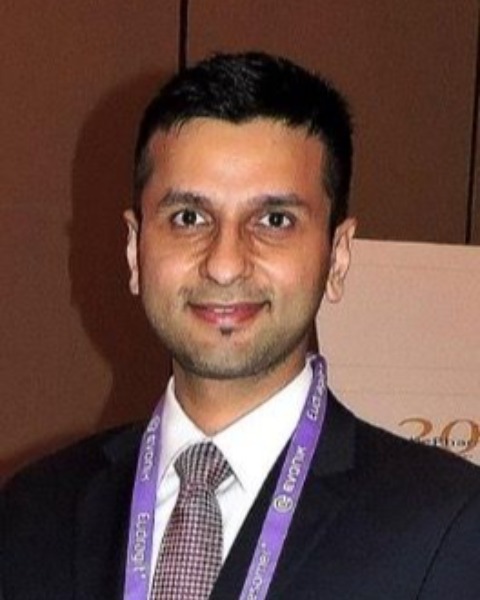Pharmacometrics & Pharmacokinetics (PMK)
Category: Member Submission
Poster Session II
PII-142 - POPULATION EXPOSURE–RESPONSE ANALYSIS SUPPORTS EFFICACY OUTCOMES OF GARADACIMAB IN PATIENTS WITH HEREDITARY ANGIOEDEMA.
Thursday, March 28, 2024
5:00 PM - 6:30 PM MDT
A. Sharma1, F. Glassman1, R. Garcia2, J. French2, M. Wiens2, B. Miguel-Lillo1, J. Lawo3, I. Jacobs1, D. Polhamus2, P. Nandy1; 1CSL Behring, King of Prussia, PA, USA, 2Metrum Research Group, Tariffville, CT, USA, 3CSL Behring Innovation GmbH, Marburg, Germany.

Ankur Sharma, PhD (he/him/his)
Associate Director, Pharmacometrics
CSL Behring, King of Prussia, PA, USA
Yardley, Pennsylvania, United States
Presenting Author(s)
Background: Garadacimab (anti-activated factor XII monoclonal antibody) demonstrated efficacy for the prevention of hereditary angioedema (HAE) attacks with a favorable safety profile in Phase 2, pivotal Phase 3 (VANGUARD), and Phase 3 open-label extension studies. In this exposure-response (ER) analysis, the efficacy of garadacimab and effect of covariates on attack rate (number of attacks/month) were assessed to support garadacimab dosing in patients with HAE.
Methods: This ER analysis used a dataset of 177 unique patients with HAE receiving garadacimab or placebo across the three studies. Attack rates were quantified during run-in and treatment, and attacks were modeled using a repeated time-to-event framework. The effect of covariates (age, ethnicity, sex, prior treatment, HAE type) on attack hazard was analyzed using a full-covariate modeling framework. Population simulations (N=1000) were used to assess predicted HAE attack rates across exposure metrics for patients receiving garadacimab 200 mg once monthly (q1m).
Results: The relationship between garadacimab exposure and attack rate was described well using a time-varying Poisson process model with a maximum inhibition ER relationship. Attack rates during treatment were comparable across observed bodyweight and covariate ranges, indicating that garadacimab 200 mg SC q1m provided sufficient exposure with no need for bodyweight- or covariate-based dose adjustment. Population predictions with garadacimab 200 mg SC q1m demonstrated exposures in the target therapeutic threshold for the majority of patients, with 75% of patients predicted to achieve ≥90% attack rate reduction compared with run-in at steady state. The probability of being a 90% responder increased from 0.628 for patients in the ≤5th exposure percentile for AUCtau,ss to 0.873 for patients in the >95th exposure percentile for AUCtau,ss.
Conclusion: This ER analysis supports the use of garadacimab 200 mg SC q1m for the prevention of HAE attacks in adults and adolescents aged ≥12 years, with no need for covariate-based dose adjustment.
